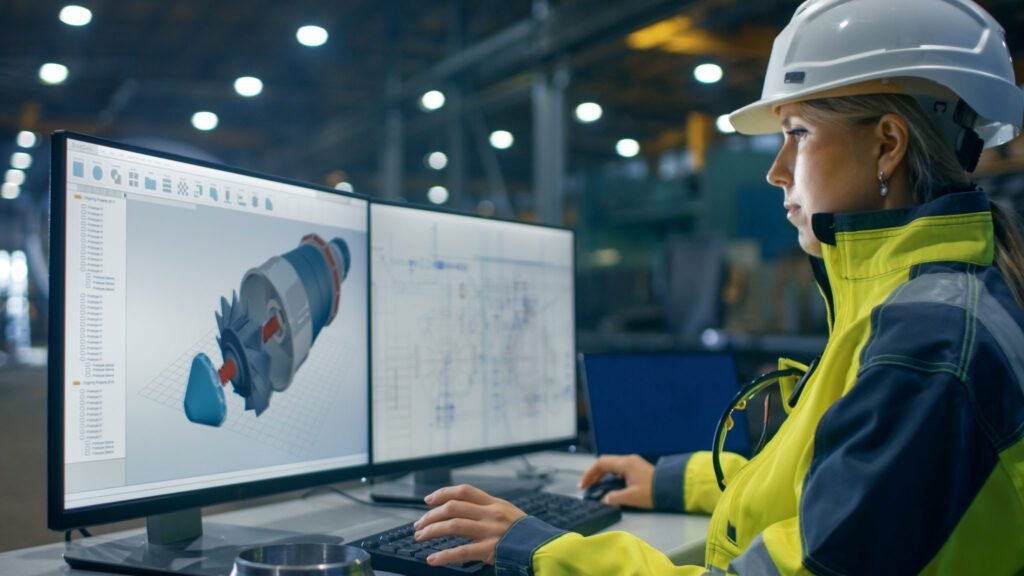Engineering Consultancy
3D Imaging in Engineering: Transforming Project Visualization in Oman

The sultanate of Oman, with its rich culture and strategic geographical location, has long been a hub for architectural and infrastructural wonders. Over the years, the engineering landscape of Oman has seen a significant shift towards the integration of advanced technologies, with 3D imaging standing as one of the most revolutionary. This post dives deep into how 3D imaging is not just a buzzword but a transformative force in the engineering sector, especially within the Sultanate.
Table of Contents
Introduction
3D imaging in engineering involves the creation of three-dimensional models from two-dimensional images for visualization, analysis, and even project planning. It’s a technology that has opened a new frontier in how we perceive and execute engineering projects, from conceptualization to completion. Oman, a nation experiencing rapid urbanization and modernization, particularly in its infrastructure and construction sectors, stands to gain immensely from the application of 3D imaging technologies.
In a region where the meeting of new-age development with traditional architecture is a high art, precision and forward-thinking are irreplaceable. With this piece, we aim to demonstrate the tangible benefits that 3D imaging brings to engineering projects, the current applications of the technology in Oman, and the path to overcoming challenges for a smooth transition towards a more future-ready industry.
Benefits of 3D Imaging in Engineering
Enhanced Project Planning and Design Accuracy
The transition from 2D to 3D has not just been an upgrade in dimensions but also in the accuracy and depth of engineering projects. The ability to create detailed 3D models allows for more precise planning, identifying potential design flaws, and making informed decisions at the earliest stages of a project. The result is a streamlined workflow that significantly reduces the chances of costly reworks and schedule overruns.
In a country like Oman, where projects often span across diverse terrains, this level of detail in planning is critical. The prominent port expansions and new airport terminals in Oman, for instance, require the stitching together of complex design elements, a task made efficient through 3D visualization.
Improved Communication with Stakeholders
For projects to succeed, effective communication is key. 3D imaging fosters a language of visuals that transcends technical jargon, making it easier to convey complex design concepts to clients, regulatory bodies, and communities. Stakeholders can ‘walk through’ a virtual model of a proposed structure, allowing them to experience the project as it would in reality, long before the first brick is laid.
This novel approach to communication is invaluable, especially in bridging the gap between investor expectations and technical possibilities. It’s about creating a shared vision that paves the way for smoother, more unified implementation.
Cost and Time Savings in Construction Projects
Oman’s ambitious development plans come with direcdayHe 3D imaging plays a pivotal role in mitigating unexpected project costs and delays. By simulating the building process, engineers can optimize construction methodologies, identify potential conflicts with existing infrastructure, and make necessary adjustments without interrupting the actual project.
In a bustling market where downtime costs millions, such foresight is no less than a financial safety net. Consider, for instance, the 3D designs that allow contractors to prefabricate building components with a level of precision that ensures they fit perfectly on-site, slashing construction hours and related costs.
Application of 3D Imaging in Oman
Case Studies Showcasing Successful Implementation
Oman’s engineering community has been quick to acknowledge and apply this technology to enhance project outcomes. Notable case studies include the Muscat International Airport expansion, where 3D imaging technologies aided in visualizing the flow of passengers through the new terminal, ensuring a user-friendly design that optimized traffic and operations.
Similarly, the innovative use of 3D modeling in the Oman Convention and Exhibition Centre enabled engineers to simulate different setups for events, ensuring that the venue can seamlessly accommodate the varied needs of international conferences and exhibitions.
Integration of 3D Imaging Technologies in Infrastructure Projects
The story of 3D imaging in Oman is not just about visualization; it extends to the very core of infrastructure projects. The integration of Building Information Modeling (BIM) has redefined design processes in projects such as the Oman Rail Network, enabling stakeholders to view a project at all stages of its lifecycle and derive crucial insights for maintenance and operations long after the project’s completion.
In a region where infrastructural precision is pivotal, this level of detail predicts excellent long-term functionality and cost efficiency.
Challenges and Solutions
Overcoming Technology Adoption Barriers
While the benefits are clear, the path to integrating 3D imaging technologies is not without its obstacles. One significant challenge is the investment required for software, hardware, and professionals skilled in this domain. To counter this, public-private partnerships and educational institutions are increasingly becoming hubs for cutting-edge technology and training, allowing a smoother shift towards 3D adoption.
Collaborations with global tech innovators can also bring about knowledge transfer and localized solutions that align with Oman’s unique engineering demands.
Training and Skill Development for Professionals
Adopting 3D imaging isn’t just about purchasing software; it’s a transformation that requires upskilling the workforce. Here, Oman’s dedication to education and professional training comes to the fore, with institutions emphasizing courses and certifications focused on 3D imaging and modeling.
Continuous professional development through workshops and on-the-job learning experiences will be critical in ensuring that engineers are not only familiar with the technology but become adept at leveraging it for project advantage.
Ensuring Data Security and Privacy
The intricacy and sensitivity of the data involved in 3D imaging also raise concerns about security and privacy. Solutions like encrypted data transmission, robust access controls, and storage compliance with international standards can help allay these fears, keeping Oman’s engineering innovations secure from unauthorized access.
A proactive approach to security frameworks offers a safety net for the large volume of project data that 3D imaging entails.
Future Trends in 3D Imaging
Role of Artificial Intelligence and Machine Learning
The future of 3D imaging is closely entwined with AI and Machine Learning, with these technologies poised to automate and optimize more aspects of project visualization. AI’s ability to learn from and improve on past data can pave the way for increasingly accurate and predictive 3D imaging models, further enhancing the technology’s contribution to engineering in Oman.
In a rapidly evolving tech landscape, Oman’s readiness to incorporate AI as a complementary tool to 3D imaging can keep it at the forefront of innovation.
Advancements in Virtual Reality and Augmented Reality in Project Visualization
Virtual Reality (VR) and Augmented Reality (AR) offer a new dimension to project visualization, quite literally. In Oman, their role in immersive project experience has the potential to redefine how engineers approach design review and stakeholder engagement. Visualizations that can be interacted with in real-time, such as walking through a building or scaling a bridge, take 3D imaging’s communication prowess to new heights.
The integration of VR and AR with traditional 3D imaging is an inevitable trajectory for technology advancement in Oman’s engineering sector.
Conclusion
The application of 3D imaging in engineering projects is not just a quantitative tool to measure distances and volumes. In Oman, this technology is transforming the qualitative aspects of development, enriching project planning with aesthetic sensibilities, and safeguarding the longevity of structures with unprecedented precision.
Moving forward, the prospects look even brighter as the Omani engineering landscape continues to adopt and adapt to the evolving capabilities of 3D imaging. The invitation is open for professionals, businesses, and stakeholders to leverage these technologies and draw inspiration from the success stories it continues to foster in the nation’s infrastructure renaissance.
The transformation is underway, and Oman stands ready to lead the charge in the next phase of engineering ingenuity with 3D imaging at its helm. It’s time for the sultanate to take the leap and be a testament to how technology and tradition can forge a path to a future that’s both bold and beautifully engineered.
